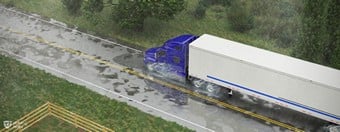Want to pull doubles or triples in your truck driving career? Doubles and triples are specialized combination vehicles, so you must obtain a Class A CDL. To do this, pass the General Knowledge test and the Combination knowledge test. Class A combination vehicles are typically equipped with air brakes, so you should also pass the Air Brakes knowledge test. Then you must pass a skills test in such a vehicle.
Next, to drive combination vehicles with multiple trailers, you must obtain a Double/Triple (T) endorsement on your Class A CDL. To get this endorsement, you must pass the Double/Triple knowledge test. This test covers such topics as safe handling, air brakes on doubles and triples, coupling and uncoupling, pre-trip inspections, rollovers, and trailer sway. (However, no special skills test is required for this endorsement.)
All these knowledge tests are based on the official Kansas CDL manual (Kansas CDL Handbook 2026). You probably read much of it already as you studied for your CDL and perhaps some other endorsements. We offer tools to complement the official manual with intensive training. We have created five Kansas Doubles and Triples Endorsement Practice Tests, of which this practice test is the first. This practice test is based on Chapter 7 (Doubles and Triples) of the official CDL manual, just like the official Double/Triple knowledge test. It’s up to date as of January 2026. The 20 multiple-choice practice questions and answers on this practice test address such topics as air lines, converter dollies, coupling, following distance, rearward amplification, and rollovers.















